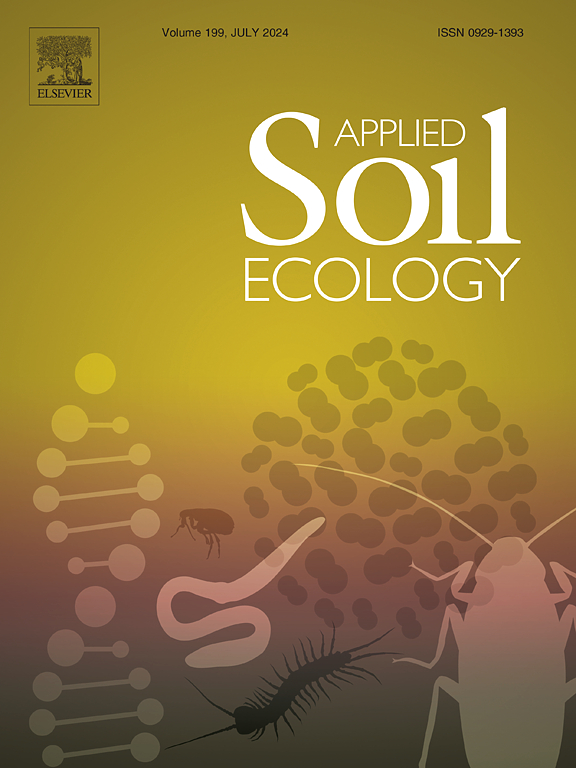The role of rhizosphere microbial community structure in the growth and development of different tea cultivars
IF 4.8
2区 农林科学
Q1 SOIL SCIENCE
引用次数: 0
Abstract
The community structure of soil rhizosphere microorganisms is critical for tea plant growth, but few studies have examined how rhizosphere microorganisms from different tea cultivars affect the plant growth and underlying mechanisms. The study investigated the environment of soils, including rhizosphere microorganisms, soil nutrient levels, enzyme activity, as well as the growth parameters, including Fv/Fm value, N content, SPAD value and vegetation indexes of four tea cultivars. The results showed that the structure of the soil microbial community varied according to tea cultivar types, which was manifested in α diversity, microbial genus level, and bacterial communities. The soil nutrient content and soil enzyme activity had significant differences among tea cultivars, especially the absorption and transformation of nitrogen and phosphorus, as well as organic matters. The rhizosphere microorganisms of different cultivars had certain effects on tea canopy index. A strong correlation was observed between microbial communities and the vegetation index. Ascomycota, Basidiomycota, Actinobacteriota, and other microorganisms may be the key species affecting the phenotype of tea plants. The study demonstrates that different tea cultivars select or recruit their own unique microbial communities, affecting soil nutrient uptake and tea plant phenotype. The study enhances our mechanistic understanding of plant-soil interactions among different tea cultivars.

求助全文
约1分钟内获得全文
求助全文
来源期刊

Applied Soil Ecology
农林科学-土壤科学
CiteScore
9.70
自引率
4.20%
发文量
363
审稿时长
5.3 months
期刊介绍:
Applied Soil Ecology addresses the role of soil organisms and their interactions in relation to: sustainability and productivity, nutrient cycling and other soil processes, the maintenance of soil functions, the impact of human activities on soil ecosystems and bio(techno)logical control of soil-inhabiting pests, diseases and weeds.
 求助内容:
求助内容: 应助结果提醒方式:
应助结果提醒方式:


